Value Midrange Common Components
While AMD and Intel architectures differ in sockets and sometimes memory configurations, there is more that is the same in the two systems than there is that is different. For that reason the Intel and AMD Value Midrange Systems share a number of common components.
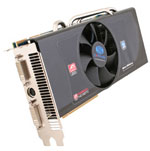 |
For video card best value we have paired the Sapphire Radeon HD 4870 1GB with both the Intel and AMD systems. As pointed out in the recent Holiday 2008 GPU Guide, the 4870 1GB is the minimum card we use internally for gaming comparisons. The Sapphire was our guide choice, but $230 seems the going rate for the 4870 1GB these days. It is available from MSI, Diamond, ASUS, HIS, Power Color, and others so you can shop for the best buy.
On the Intel system, the Gigabyte GA-EP45-UD3P motherboard provides a second PCI x16 slot. Video performance can be improved even further by adding a second Radeon HD 4870 1GB in CrossFire mode. You can also start with two 4870 512MB video cards that are now available for as little as $180 each from Power Color. This will provide 4870 CrossFire for a video card cost for both cards of just $360 total. The motherboard choice for AMD is the Foxconn A79A-S, which also provides multiple x16 slots for CrossFire. The same video options apply to the AMD Value Midrange system.
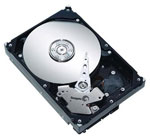 |
Hard drive capacity continues to grow, as you can see in our selection of the Seagate Barracuda 1TB drive (1000GB). While the Seagate 1.5TB drive was plagued with problems at its release, the performance and reliability of the 1TB Seagate has been excellent in our testing so far. For a price of around $100 the value is incredible. While there are differences between hard drives, outside of running benchmarks most people aren't likely to notice the difference in performance between Western Digital, Seagate, Samsung, Hitachi, and other major brands. All are worthy of consideration if the price per gigabyte (or terabyte) is right.
 |
We feel the optical drive for a best value midrange system needs to play Blu-Ray disks. The flexible LG GGC-H20LK has the ability to read both Blu-Ray and HD format disks. It also can burn DVDs at 16x speed in single or dual-layer formats. It cannot, however, burn 25GB/50GB Blu-Ray disks; adding that capability raises the cost to around $200 to $250. BD burners like the $200 LITE-ON 4X BD-R 12X DVD+R 4X Blu-ray DVD-ROM or the $230 LG 6X Blu-Ray Burner GGW-H20LK are good choices.
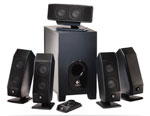 |
Cases are often very personal choices when it comes to features, but the Cooler Master RC-690-KKN1-GP is one of our favorites and it is also very well regarded by our readers. It comes standard with three 120mm fans for excellent cooling and low noise, and the power supply mounts in the bottom of the case. Audio, USB, Firewire, and eSATA ports are on top of the case, which we find an ideal location. The front bays are also ventilated metal mesh for cooling and appearance. If you prefer a more traditional case configuration, the Cooler Master Mystique, also selling for $80, mounts the PSU on top, provides font panel jacks, and is loaded with expansion ports and two 120mm fans.
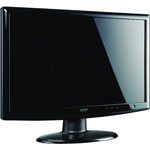 |
The last major component to discuss is the display, and here the tilt was toward best value at full 1080p HD (1920x1080) resolution. The new class of 16:9 21.5" LCD monitors provide true 1080p resolution at the break-through price of just $199. That stellar value shows just how far LCD technology has progressed. If your budget allows, or you just prefer a slightly bigger screen at the same resolution, you can move up to a 24" 16:9 1080p LCD that is selling today for around $300. Alternately, you can downgrade the resolution to 1680x1050 for slightly larger pixels (i.e. more readable text) if you purchase a 22" LCD and save a bit of money.
While the Creative Sound Blaster X-Fi Xtreme Audio is not the best sound card on the market, it is definitely tops in game compatibility. This Creative X-Fi card does a good job with audio, won't break the bank at $50, and it is a great choice for either set of powered speakers. Some would argue that onboard sound is all you need for a $1500 system, and if you are inclined to agree or have a really tight budget, you can save $50 on either the Intel or AMD Value Midrange builds just by using onboard sound.
 |
The Logitech X-540 has been a perennial favorite of users as a reasonably priced but good performing, powered 5.1 computer speaker system. It will certainly not challenge the performance of a separate Dolby amplifier powering audiophile speakers, but it will provide surprisingly good sound for the price.
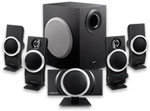 |
The Creative Inspire T6100 76 Watts 5.1 Speaker System is a similar powered speaker system that is selling at Amazon for just $57. The Creative speaker system is our choice in the AMD Value Midrange system, but either speaker system is a good choice for these Value Midrange builds.
Our choice for the top of the midrange is the well-regarded Logitech G51 system. This is mentioned only because the G51 is now just $90 after a $40 rebate, so if you want a better speaker system your net cost for choosing the G51 instead is just $10 more than the Logitech X-540 or $33 more than the Creative Inspire T6100.
 |
These are clearly desktop systems, so the keyboard and optical mouse are the basic Microsoft OEM kit. If you have more specific needs or a favorite gaming mouse you likely know exactly what you prefer. The Microsoft pair is very capable for most. For greatest compatibility, we have chosen Microsoft Vista Home Premium OEM as the Operating System. Unless you have specific networking and special enterprise security needs there is no real reason to pay the extra for Vista Ultimate. We personally recommend the 64-bit version now, but a select few applications still need a 32-bit OS (i.e. Dragon NaturallySpeaking and GameTap to name just two).










77 Comments
View All Comments
Wesley Fink - Saturday, January 17, 2009 - link
There have been several articles ar AnandTech evaluating the effectiveness of SSDs. The biggest issue in adding an SSD to a System Guide recommendation is the state of Windows Vista, which does not really support SSDs as they need to be supported.Windows 7 DOES support SSD technology. With the release of that OS we will all be even more excited about the capability of Solid State Drives. Until then it is diffiuclt to recommend an SSD in a typical entry or mid-range build.
However, the prices of capable SSD drives are dropping fast. There are several current generation 64GB SSD drives selling for less than $150 and a large number of 16GB SSDs for under $100. At those prices it is hard to ignore the potential of the SSD to improve system performance.
Wesley Fink - Thursday, January 15, 2009 - link
An SSD with the 1TB drive is certainly an option worth considering. It is fairly easy to add that SSD to any of these system builds and the cost is much lower today with memory chips selling for bargain prices. We will talk a bit more about SSD options in a future System Buyers Guide.vol7ron - Wednesday, January 14, 2009 - link
Fail to see why when I add up all the Intel Performance Midrange, I get $2024 and not $1999Wesley Fink - Wednesday, January 14, 2009 - link
The Gigabyte motherboard price reduction and rebate we were expecting have now kicked in, reducing the Gigabyte 1366 motherboard cost from $210 to $200 and $185 after $15 rebate. That change makes the total system price $1999, so we have revised both the Motherboard price and grand total price.Wesley Fink - Wednesday, January 14, 2009 - link
There were many last minute changes to the guides and prices as the prices are very fluid. Our web editor checked prices when he posted and I made some final corrections and checked totals in Excel. One of the changes was overlooked on the system you mentioned. Your $2024 total is correct and the total has been changed.vol7ron - Thursday, January 15, 2009 - link
Ahh okay. I understand that prices change as this system will be 3/4 the price 7 months from now. Just wanted to let you know that the total should still add up. Can't wait to see what will happen with the Intel/Jmicron SSD market.just4U - Wednesday, January 14, 2009 - link
You know, I'd really like to see a followup article here with benchmarks of these systems against the best intel has to offer. Not overclocked mind you .. just stock straight on performance difference. It would give people a very good idea of what their spending their money on and the differences those dollars make. For kicks throwing in last years Midrange system would be nice to.Just a thought. Hopefully it's taken under consideration.
just4U - Wednesday, January 14, 2009 - link
Grr didn't have it all typed out before I hit the post button. The thing is .. You have these buyer guides right? The logical next step would be to test them and give people a idea of what their buying. One would think since these items do make it into your buyers guide then perhaps the manufactuer's would be generous enough to supply the parts for the test(s) since they would be in the spotlight and all. :)Please consider it. If not now then for future buyer guide articles. I know it's alot of work and all but it's a logical next step to a fuller more complete article.
Thanks for reading both comments.
7Enigma - Wednesday, January 14, 2009 - link
While possibly not practical (sounds like the Anand team is quite spread out around the world), it would be very helpful to see what you are mentioning. Putting a real world head to head comparison would show exactly what price premium is put on the systems, which would allow us system builders to justify an upgrade or feel better about saving some money with a lesser part.I'm just willing to bet all the parts aren't in the same room just waiting to be pieced together...
v12v12 - Tuesday, January 13, 2009 - link
As a current Intel fan, and soon to be Intel Upgrader: Typing on a Turion X2, and gaming on an OLD ass XP2500@2.41.... THANK GOD for AMD's new awakening. A hand out of the grave, reaching for something to pull itself from Hades!Though AMD isn't quite "competitive" in reality, it's a damn good start and gives me HOPE for CHEAP PRICES!!! The better AMD does, the BETTER for ALL of us! It's hard rooting for the "loser," but when that loser is going to strike a blow to Goliath and cause another potential price war? COME ON DOWN!!! You're a contestant on the PRICE IS RIGHT!!!